- Home
- Frank V. Webster
Air Ship Boys : Or, the Quest of the Aztec Treasure Page 7
Air Ship Boys : Or, the Quest of the Aztec Treasure Read online
Page 7
CHAPTER VII
THE MAKING OF A NEWSPAPER STORY
Let us see whether the young reporter was baffled by the reticenceof the secretive boys.
"Every one to his trade," murmured Bob Russell, as he hastened fromNed and Alan, "and now, me to mine."
Bob was what was known on his paper as the "depot reporter." It wasnot the most important assignment, for usually his work consistedonly in describing such notable personages as passed through thecity and now and then in interviewing the more important of these.But this day he was confronted with a mystery and it was hisbusiness to solve it. He acted quickly.
Hurrying after the depot master, with whom of course he wasfriendly, he persuaded that official to go at once to the conductorof the train and ascertain the names of the boys. This was a simplething, done in that manner, for even the passengers in a special orprivate car must have regular tickets. The conductor at oncerevealed the identity of the three passengers. Although Bob knewthe conductor, he realized that he stood a chance of being refusedeven thin information if he asked for it personally.
While his friend the depot master was getting this information, Bobquickly, but apparently carelessly, approached the head brakeman whohad helped bring the train from Chicago. It was Tom Smithers--alsoa friend of Bob's, who made a point of knowing every employeerunning into the station.
"I see you've got the Placida with you?" began Bob indifferently.
"Yep," answered Tom, "and loaded to the axles. All exceptpassengers. She's running light on them. Two boys and a coon."
"I just had a talk with them," remarked Bob, carelessly offering thebrakeman a cigar. "Pretty dusty, eh?" After a moment's casual talkBob returned to the subject.
"I guess those kids must be next--running a car with locked doors."
"Locked doors!" snorted Tom, putting his cigar away for asurreptitious smoke. "Not on your life. Not against me. You betshe was open whenever I rang."
"But it might just as well have been locked," said Bob. "The placeis so jammed full of stuff. I couldn't make out what it was, butthere was a wad of it."
The unsuspecting brakeman then gave Bob what he was hoping to get.
"Well, I stopped and saw it," he confessed. "I roused up the coonafter midnight to have a look at the ropes and when I came back Itook my time. They got a case of powder or dynamite in there marked'Explosive.' I didn't bother that but the rest was plain. Half theboxes in the car were labeled 'balloon works' or 'motor works.'It's a balloon show--nothing else."
"Where is the car going?"
"They ain't consulted me," laughed Tom.
A few moments later Bob was in the office of the divisionsuperintendent. When he left he knew that the Placida would bedropped on the only siding at the little town of Clarkeville in NewMexico. He had also looked over the best map in the offices andfixed in his mind the topography of the adjacent country.
Before half past nine Bob had presented these scattered facts to hiscity editor.
"It's a story, all right, Bob, and a good one. Go to it," said theeditor. And Bob did the best he knew how--in a newspaper way. Onthe suggestion of the editor he telegraphed to the representative ofthe Comet in Chicago: "Who is Ned Napier?" In a little over an hourhe had a hundred and fifty word telegram outlining Ned's aeronauticcareer and concluding: "Why? What do you know? Napier not here.Family won't talk."
Then Bob began his story. It was, for a reporter of his experience,brilliant, with good deductions, good guesses and good ambiguousgeneralities. It seemed to tell more than it really did.
At four o'clock that afternoon Ned and Alan were speeding over thegreen and fertile prairies of middle Kansas in blissful ignorance ofwhat Bob Russell had done. Under striking headlines appeared thefollowing story:
"Ned Napier, the famous young aeronaut of Chicago, passed throughthe city this morning on his way to the southwest to execute themost daring and important balloon journey ever undertaken in thiscountry. Accompanied by an assistant, Alan Hope, and on board aspecial car packed with $50,000 worth of apparatus he will proceedto Clarkeville, an insignificant town in New Mexico, from whichplace he will make his hazardous flight over the mountains lying tothe north. The aerial journey may possibly extended over the SierraNevadas as far as the Pacific Coast.
"The details of the expedition are not made public, as young Napierhas been retained by the authorities at Washington and is operatingunder a strict pledge of secrecy. The knowledge that such anexpedition is under way was made known for the first time to therepresentative of the Comet by Mr. Napier at the Union Station thismorning. While slow to discuss the ultimate object of his trip Mr.Napier talked of his plans in a general way.
"'I represent the Hydrographic Department,' he said to the reporter,'and the journey I am about to make may extend from Clarkeville asfar as the Pacific. I hope it will accomplish what the departmenthas planned, but you know that we who are in this profession arealways prepared for failure. My assistant and I may easily have ourlives crushed out on the rugged peaks of the mountain chain we areattempting to cross.'
"Mr. Napier suggested that some might conclude that he had been sentout as a 'rain maker,' or 'cloud breaker' in an attempt to securerain for the arid plains, but he laughed at this idea.
"In the government's special car, carefully safeguarded, is carrieda large can of a new and powerful explosive. In exhibiting this tothe reporter Mr. Napier good-naturedly said:
"'I am sorry I cannot tell the public the exact character of thisnew explosive. But the secret belongs to the government.'
"When it was suggested that the explosive might be destined forcertain elaborate experiments in the unpopulated wilderness of theregion to which the expedition is now hastening on the Limited, Mr.Napier would only answer;
"My lips are sealed. I can say no more. But I compliment theComet in discovering what all the eastern papers have missed--that astupendous thing is projected and that I have the honor, with myfriend, Mr. Hope, to attempt it."
Then followed an elaborate rewritten version of what had beentelegraphed from Chicago concerning Ned. After this was a detailedaccount of the car, not omitting little Mary Hope's bouquet of fadedroses, which in Bob's story became "a wealth of cut blossoms, thetribute of Mr. Napier's scientific friends."
What Bob wrote was in type by twelve o'clock. Three hundred wordsof it were telegraphed to the Chicago evening newspapers. Sharp atsix o'clock that evening the Chicago correspondent of the New YorkWorld sent advice to his paper that he had a story on the mystery ofwhat Ned Napier was about to do for the government. Word came backat once to send on the story.
At ten o'clock the telegraph editor of the World in New York tookthe account just received to the managing editor of the paper.
There was a minute's consultation, a nod of the head, and at twelveo'clock that night Bob Russell was awakened to respond to atelephone call. It was his own managing editor who read him thistelegram:
Managing Editor, Comet, Kansas City
Send man at once to follow Chicago balloon man and discover mission.Advance funds and draw on us. Will share story with you.
Managing Editor,New York World.
It is hardly necessary to say that Bob Russell was a passenger onthe Limited leaving the next morning. He was just twenty-four hoursbehind in the race, but he meant, if he could, to execute hisorders, and was already smiling delightedly in anticipation of whathe knew would be a contest of wits.

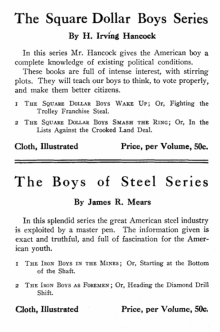 The Iron Boys in the Mines; or, Starting at the Bottom of the Shaft
The Iron Boys in the Mines; or, Starting at the Bottom of the Shaft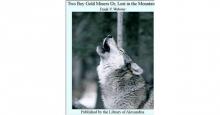 Two Boy Gold Miners; Or, Lost in the Mountains
Two Boy Gold Miners; Or, Lost in the Mountains The Boys of Bellwood School; Or, Frank Jordan's Triumph
The Boys of Bellwood School; Or, Frank Jordan's Triumph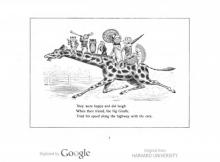 Book of Cheerful Cats and Other Animated Animals
Book of Cheerful Cats and Other Animated Animals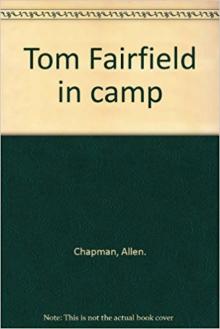 Ralph of the Roundhouse; Or, Bound to Become a Railroad Man
Ralph of the Roundhouse; Or, Bound to Become a Railroad Man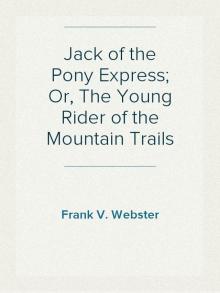 Jack of the Pony Express; Or, The Young Rider of the Mountain Trails
Jack of the Pony Express; Or, The Young Rider of the Mountain Trails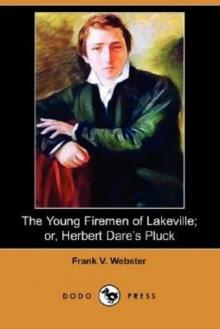 The Young Firemen of Lakeville; Or, Herbert Dare's Pluck
The Young Firemen of Lakeville; Or, Herbert Dare's Pluck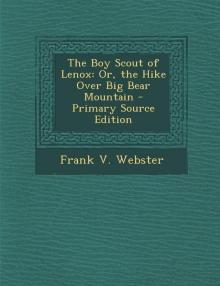 Boy Scouts of Lenox; Or, The Hike Over Big Bear Mountain
Boy Scouts of Lenox; Or, The Hike Over Big Bear Mountain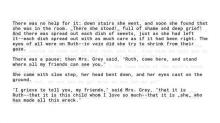 Book of One Syllable
Book of One Syllable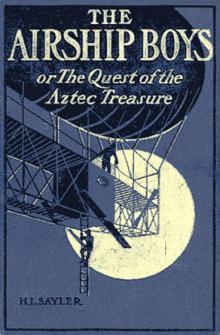 Air Ship Boys : Or, the Quest of the Aztec Treasure
Air Ship Boys : Or, the Quest of the Aztec Treasure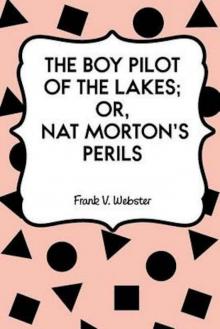 Boy Pilot of the Lakes; Or, Nat Morton's Perils
Boy Pilot of the Lakes; Or, Nat Morton's Perils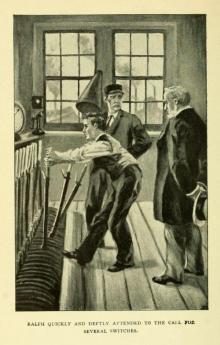 Ralph in the Switch Tower; Or, Clearing the Track
Ralph in the Switch Tower; Or, Clearing the Track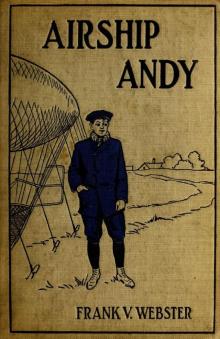 Airship Andy; Or, The Luck of a Brave Boy
Airship Andy; Or, The Luck of a Brave Boy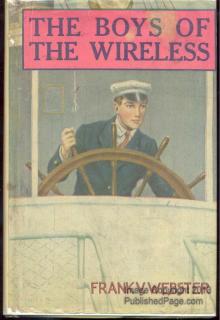 Boys of the Wireless; Or, A Stirring Rescue from the Deep
Boys of the Wireless; Or, A Stirring Rescue from the Deep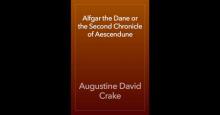 Alfgar the Dane or the Second Chronicle of Aescendune
Alfgar the Dane or the Second Chronicle of Aescendune Boy Knight
Boy Knight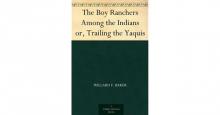 Boy Ranchers Among the Indians; Or, Trailing the Yaquis
Boy Ranchers Among the Indians; Or, Trailing the Yaquis Boy from the Ranch; Or, Roy Bradner's City Experiences
Boy from the Ranch; Or, Roy Bradner's City Experiences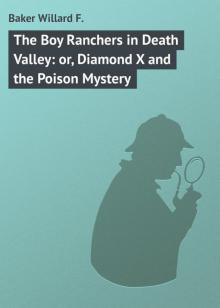 Boy Ranchers in Death Valley; Or, Diamond X and the Poison Mystery
Boy Ranchers in Death Valley; Or, Diamond X and the Poison Mystery Boy Ranchers on the Trail; Or, The Diamond X After Cattle Rustlers
Boy Ranchers on the Trail; Or, The Diamond X After Cattle Rustlers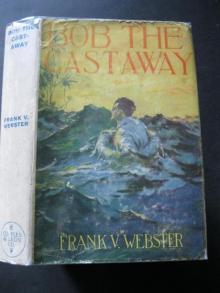 Bob the Castaway; Or, The Wreck of the Eagle
Bob the Castaway; Or, The Wreck of the Eagle Boy Ranchers in Camp; Or, The Water Fight at Diamond X
Boy Ranchers in Camp; Or, The Water Fight at Diamond X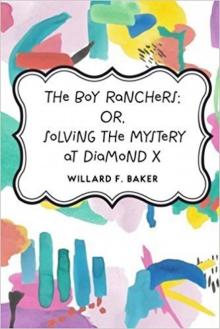 Boy Ranchers; Or, Solving the Mystery at Diamond X
Boy Ranchers; Or, Solving the Mystery at Diamond X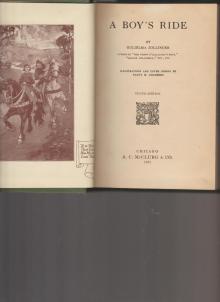 Boy's Ride
Boy's Ride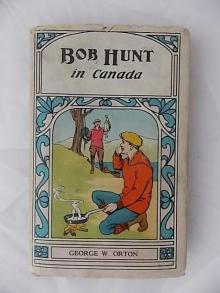 Bob Hunt in Canada
Bob Hunt in Canada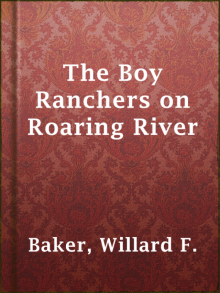 Boy Ranchers on Roaring River; Or, Diamond X and the Chinese Smugglers
Boy Ranchers on Roaring River; Or, Diamond X and the Chinese Smugglers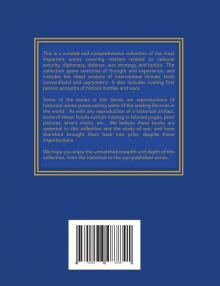 Alida; or, Miscellaneous Sketches of Incidents During the Late American War.
Alida; or, Miscellaneous Sketches of Incidents During the Late American War.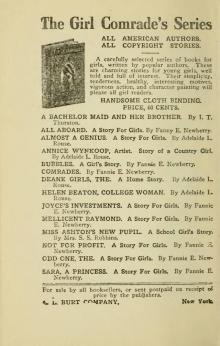 All Aboard: A Story for Girls
All Aboard: A Story for Girls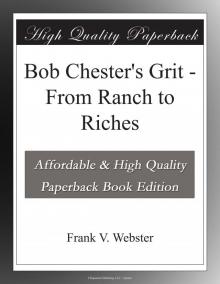 Bob Chester's Grit; Or, From Ranch to Riches
Bob Chester's Grit; Or, From Ranch to Riches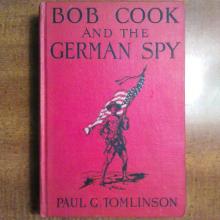 Bob Cook and the German Spy
Bob Cook and the German Spy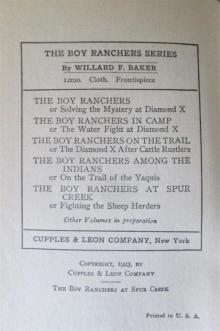 Boy Ranchers at Spur Creek; Or, Fighting the Sheep Herders
Boy Ranchers at Spur Creek; Or, Fighting the Sheep Herders